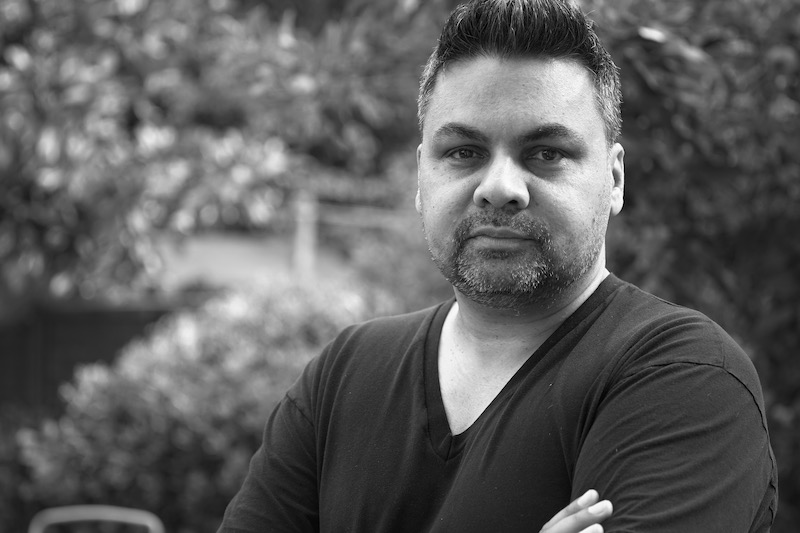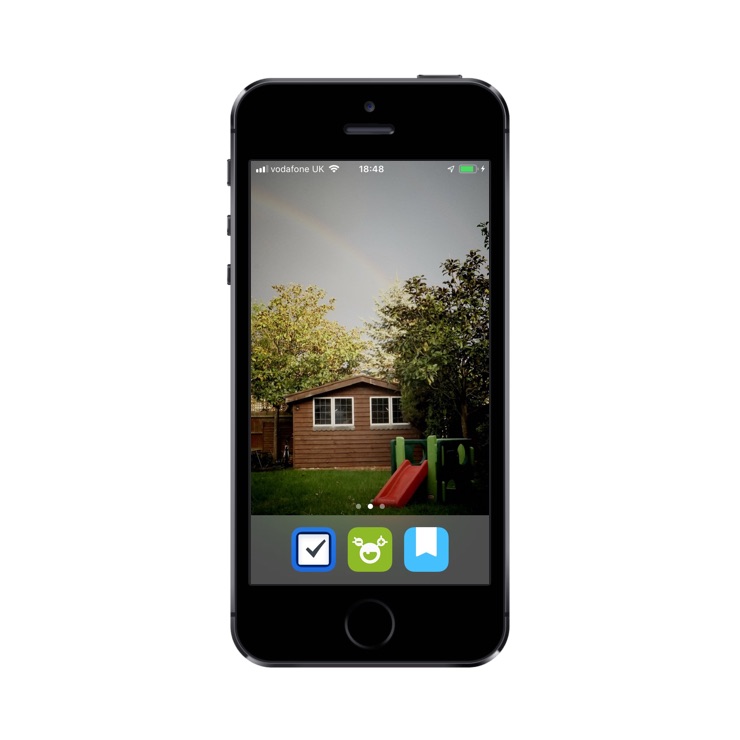How Shahid Ahmad Stays Focused on His Phone
In this Mindfulness Monday post, we talk to video game developer and podcaster Shahid Kamal Ahmad about the steps he takes to stay out of the Infinity Pools and stay focused on what’s important.
Meet Shahid
Shahid Kamal Ahmad is a video game developer with 30+ years of experience. I met Shahid when David Sparks and I interviewed him for the Focused podcast, and I was intrigued by the intentional constraints he had established around his focused work.

Shahid has been named one of Games Industry International’s Top 10 Persons of the Year and 100 Top Influencers in the British Games Industry, Develop’s 25 People that Changed Games, one of MCV’s Brit List 100, received Develop’s Publishing Hero award for his team’s role in opening PlayStation up to developers, and for commissioning over 100 titles, including No Man’s Sky, Hellblade, The Persistence and Velocity 2X.
In his 37th year in the video games industry, Shahid has come full circle back to his roots as a game developer, founding Ultimatum Games. He hosts the Remaster podcast on Relay FM, mentors developers for PlayStation Iberia and is on the advisory boards of the BGI and the MOBO Trust. He is the author of Papa Can I Be, illustrated by Faryal Ahmad, a short illustrated book of verse for children.
I asked Shahid if he’d be willing to answer a few questions about his intentional approach to technology, and he was kind enough to provide the following interview.
The 5 Best Productivity Apps (Sweet Setup Favorites)
Download: We spend an inordinate amount of time sorting through hundreds of apps to find the very best. This list of must-have productivity apps includes app links, quick-start info, and pro-tip workflow recommendations for each app.
What sort of boundaries or intentional constraints (i.e. rules) have you set up around how you use your technology?
My iPhone was my drug of choice for many years, so I took the following deliberate steps:
- I started using Screen Time for a few weeks so that I could effectively perform a self-intervention. This told me what I had feared: I was wasting too much time on this seductive device.
- Then I took a sledgehammer to my notifications and badges, reducing the amount of haptic, visual and auditory interruptions to a bare minimum.
- Then I removed all the “Infinity Pools,” an idea that I had written about, but had never been able to articulate succinctly until I came across the definition in Make Time, a thoroughly useful and actionable book by Jake Knapp and John Zeratsky. This meant no Twitter, Instagram, Facebook, YouTube or Amazon apps. Pretty much every single game, bar the ones I’m actively developing, were removed too. Once I understood what an Infinity Pool was, I realised that the overwhelming sense of paralysis that comes from more choices than one can handle had no place in my life. Too much choice meant no choice.
- I simplified my home screen massively, but more on this later.
- Oh, and of course, and this was hard, and probably not necessary, but I ditched my beautiful iPhone X and bought a refurbished iPhone SE. This made the phone harder to operate and less appealing to just gaze at.
- I now use the iPad more, but I tend to be deliberate about how I use that too. My iPads have notifications disabled too, with a focus on productivity apps on the home page.
I have all notifications automatically turn off at 9pm when I go upstairs to bed for a 10pm lights off, and they don’t come back on again until 9am. We just don’t need to be bothered at these times unless it’s an emergency, and unless it’s family, so-called emergencies are rarely real emergencies. On the iPhone, you can set it up so that favourite contacts can call you outside of your disabled notifications period, so there are no concerns there.
My next evolution will be to turn off notifications from 5pm to 11am. I haven’t been bold enough to take that step yet, but it’s coming.
What does your phone home screen look like? How has the application of your intentional constraints shaped what shows up here?
I tend to use the search function to find what I need when I need it, rather than letting the seductive screen of my iPhone SE let the tail wag the dog, so to speak.
My iPhone home screen, until recently, contained only PCalc, 1Password, Brain.fm, Streaks, mySugr, Drafts, Strong and Fantastical; with Day One, Timery and Things in the dock.
My latest home screen is empty, with just Things, MySugr and Day One in the dock. I like to keep the desktop on my computers clear of icons, so I figured why not have that approach with the iPhone too?

Everything else is mostly in folders on the second screen and barely gets looked at.
As you apply intentionality to your use of technology, what are some examples of what you consider to net positives technology uses?
I am trying to reverse the role of technology in my life to its original promise and premise, which was to be a tool, not the end. For so many of us, technology is the beginning, middle and end. I am focusing on it being the middle, that is, the thing that I use and choose to get from the beginning to the end. Sometimes I will choose other, non-digital tools, like good old-fashioned pen and paper.
Using Timery to track my time spent on projects used to be a lag measure without a lead measure. I set up my lead measures on paper, in a journal, which then gets mapped into digital form in my digital calendars, and Timery is used to track how close I got to achieving my lead measure. If it’s close, then my intentionality score was high. If it was miles away, then I look within and ask the difficult questions at the end of the day, again, on paper, not using any technology, to ask myself what I was feeling, why I got sidetracked and whether I need to cut myself some slack and get back on the horse, or whether I need to get a grip and be more disciplined the next day.
I have stopped beating myself up about life not turnning out the way I had planned, even an hour in advance. The idea that we are in control of just about anything is becoming increasingly absurd to me as I grow older. Sure, I can control how I think about things, and sometimes, you hit your plan, and that’s wonderful. What’s the saying? “Man plans, God laughs.” That said, it’s important that I plan, otherwise nothing gets done. I’m no advocate of drifting.
What was your tipping point, the moment when you decided you needed to do something about your technology defaults?
I don’t think there was a tipping point — there was just a growing sense that I was not using my time as intelligently and as carefully as I wanted to. With every passing year, the life ahead of me shrinks and the life behind me grows. That takes options away, which means fewer of the things I had hoped to do are now possible.
That said, I welcomed Screen Time on the iPhone. I knew I was abusing my iPhone, or if you like, I was allowing it to use me. I was its willing victim. Screen Time told me that the problem was far worse than even my worst case estimates had prepared me for. Once the results were in, I took immediate action, and continue to chip away at the problem of unconscious time. Life is not about what I spend my time on. It’s about how conscious I am.
As you’ve changed your technology habits, what are some of the things you’ve had to learn to work around or live without?
I’ve learned that before I climb a ladder, I need to ensure it’s leaning against the right building. For example, I paid for YouTube Premium so that I wouldn’t have to sit through or skip ads when I watched YouTube videos for an hour at a time. The trick was to take YouTube off my phone and stop watching videos mindlessly.
I should make it clear that I love the services I’ve reduced. They’re not to blame. The iPhone is not to blame. Apps that exploit our weaknesses are not to blame. There is no blame here. There is only responsibility and I am responsible for how I spend my time.
I use my iPhone camera a lot less. I use my Sony mirrorless camera for photos and a DJi Osmo Pocket for video instead, and less frequently. I have become more mindful about their use. Not everything needs to be captured digitally.
A problem I thought about for a long time was the problem of curation. I have over 60,000 photos in my iCloud Photo library. My grandfather probably only had two or three photos in his house. Ever. I wondered when I’d ever find the time to select the best of those photos for review and realised that the time would never come, so the real problem was not curation, but over-capture. Over capture, over tracking, just kicks the can further down the road.
What app (or service) has the strongest pull towards getting you to go back to the way things were? And how do you deal with it?
I’m actually fine with no Twitter or Facebook on my iPhone. I found that using them often made me miserable, so I just use them a lot less now. I really don’t want things to go back to the way they were, because I’d regret it — I know I would. I think the strongest pull is any new iPhone, given that I’ve spent decades (my entire adult life as a technologist, in fact). I would love the latest iPhone, but I have no compelling reason why. I think forward to my less conscious life with the new device and that’s enough to pull me back from the brink. The new device would beg to be exploited. Unless I have a compelling need for what the new device offers, I will steer clear and save what little time I have.
How has implementing boundaries or intentional constraints positively impacted your life?
I am way more conscious, and that means I have more time. And that means I get to do more of the things I want to do, rather than what I feel compelled to do.
Life is longer to the extent that we are conscious of each moment. You know how sometimes you wake up and feel like you only went to sleep a minute ago? With modern devices, a whole lifetime can pass like that. I’m determined for that not to happen to me.
What’s your best advice for the person who is trying to change how they use their technology to be more intentional?
Never pick up your smartphone without conscious intention. If you can master that, you con do pretty much anything.
Our Must-Have, Most Used Productivity Apps
We spend an inordinate amount of time sorting through hundreds of apps to find the very best. We put together a short list of our must-have, most-used apps for increasing productivity.
